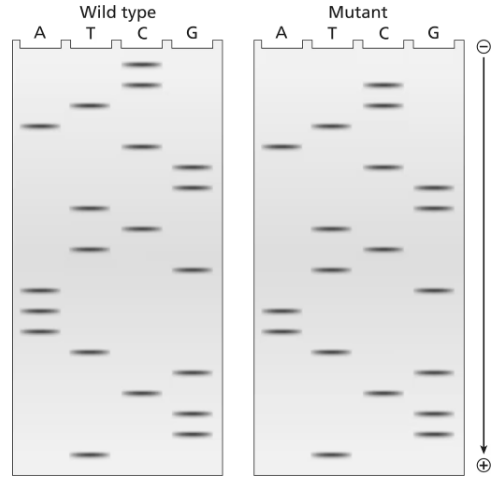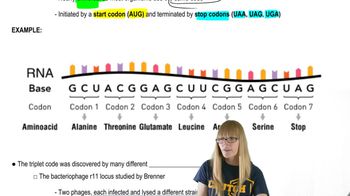A PCR reaction begins with one double-stranded segment of DNA. How many double-stranded copies of DNA are present after the completion of 10 amplification cycles? After 20 cycles? After 30 cycles?
Table of contents
- 1. Introduction to Genetics51m
- 2. Mendel's Laws of Inheritance3h 37m
- 3. Extensions to Mendelian Inheritance2h 41m
- 4. Genetic Mapping and Linkage2h 28m
- 5. Genetics of Bacteria and Viruses1h 21m
- 6. Chromosomal Variation1h 48m
- 7. DNA and Chromosome Structure56m
- 8. DNA Replication1h 10m
- 9. Mitosis and Meiosis1h 34m
- 10. Transcription1h 0m
- 11. Translation58m
- 12. Gene Regulation in Prokaryotes1h 19m
- 13. Gene Regulation in Eukaryotes44m
- 14. Genetic Control of Development44m
- 15. Genomes and Genomics1h 50m
- 16. Transposable Elements47m
- 17. Mutation, Repair, and Recombination1h 6m
- 18. Molecular Genetic Tools19m
- 19. Cancer Genetics29m
- 20. Quantitative Genetics1h 26m
- 21. Population Genetics50m
- 22. Evolutionary Genetics29m
18. Molecular Genetic Tools
Methods for Analyzing DNA
Problem 41b
Textbook Question
The two gels illustrated contain dideoxynucleotide DNA-sequencing information for a wild-type segment and mutant segment of DNA corresponding to the N-terminal end of a protein. The start codon and the next five codons are sequenced.

Identify the template and nontemplate strands of DNA.
 Verified step by step guidance
Verified step by step guidance1
Examine the DNA sequencing gels provided for both the wild-type and mutant segments. Identify the sequence of nucleotides for each strand based on the dideoxynucleotide termination method.
Determine the sequence of the mRNA by transcribing the DNA strand that serves as the template. Remember that RNA uses uracil (U) instead of thymine (T).
Identify the complementary strand to the template strand. This strand is the nontemplate strand, which matches the mRNA sequence (except for T in DNA being replaced by U in RNA).
Locate the start codon (AUG) in the mRNA sequence and verify the next five codons to ensure the sequence corresponds to the N-terminal end of the protein.
Confirm the orientation of the template and nontemplate strands by comparing the sequences derived from the gels and ensuring they align with the transcription and translation processes.
 Verified video answer for a similar problem:
Verified video answer for a similar problem:This video solution was recommended by our tutors as helpful for the problem above
Video duration:
2mPlay a video:
Was this helpful?
Key Concepts
Here are the essential concepts you must grasp in order to answer the question correctly.
Template and Nontemplate Strands
In DNA, the template strand is the one that serves as a guide for RNA synthesis during transcription, while the nontemplate strand, also known as the coding strand, has the same sequence as the RNA produced (except for thymine being replaced by uracil). Understanding which strand is which is crucial for interpreting sequencing data, as it determines the direction of transcription and the corresponding amino acid sequence.
Recommended video:
Guided course

Double Strand Breaks
Dideoxynucleotide Sequencing
Dideoxynucleotide sequencing, or Sanger sequencing, is a method used to determine the nucleotide sequence of DNA. It involves incorporating dideoxynucleotides, which terminate DNA strand elongation, allowing for the generation of fragments of varying lengths that can be separated by gel electrophoresis. This technique is essential for analyzing the specific sequences of both wild-type and mutant DNA segments.
Recommended video:
Guided course

Sanger Sequencing
Codons and Start Codon
Codons are sequences of three nucleotides in mRNA that correspond to specific amino acids during protein synthesis. The start codon, typically AUG, signals the beginning of translation and is crucial for the correct assembly of the protein. Identifying the start codon and subsequent codons in the sequenced DNA is vital for understanding the functional implications of mutations in the protein-coding region.
Recommended video:
Guided course

The Genetic Code

 7:40m
7:40mWatch next
Master Methods for Analyzing DNA and RNA with a bite sized video explanation from Kylia
Start learningRelated Videos
Related Practice
Textbook Question
491
views
